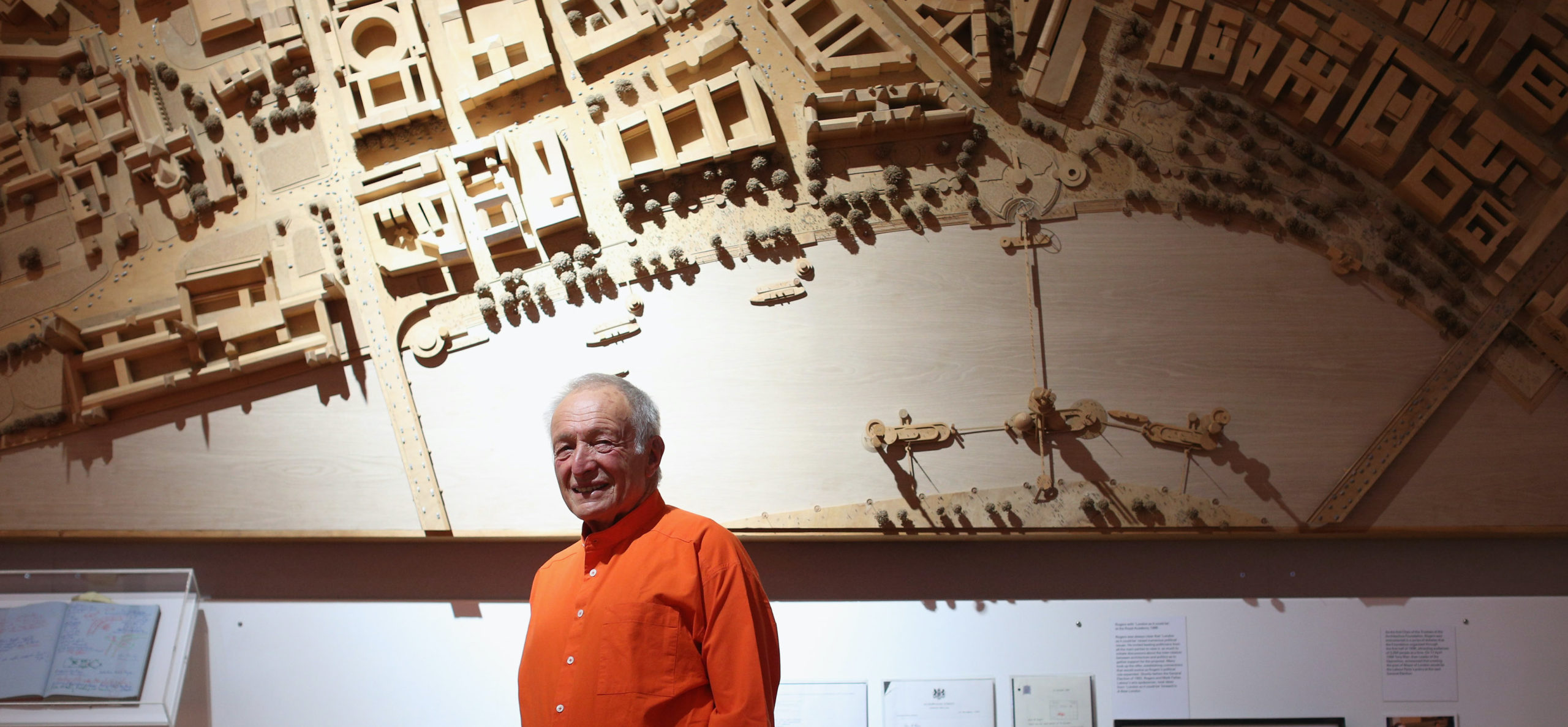Did any single human being, man or woman, Left or Right, arts or business, politics or pleasure, bestride and betoken the zeitgeist of millennium Britain better than Richard, Lord Rogers of Riverside, Companion of Honour and owner of heaven only knows how many other postnominals? Rogers, who died this weekend, was rich in garlands personal, professional and official.
He was a great leader: a creator of teams and of companies as well as of buildings. First knighted by John Major, a double Stirling prize winner, peerages and the highest honours followed when he reached his cultural apogee under Tony Blair.
Many of his buildings are not to my personal taste but I recognise that cities need iconoclastic instants, symbols of the time as much as of their place. Lord Rogers could certainly produce them with brilliant aplomb and serious intent. I still recall the shock of visiting Paris’s Pompidou Centre in a bitterly cold trip to 1980s Paris. And I love the spatial irony with which his quintessential symbol of Thatcherite capitalism, the Lloyd’s building, stands on Lime Street precisely where East India House, that quintessential symbol of eighteenth-century capitalism, also stood.
The Millennium Dome, 52 metres of weather-resistant plastic tent designed to last 25 years, was that hardest thing to create: an instant icon, one of the buildings of the millennium moment in this country and beyond. At the opening of this venue, the Queen was obliged to sing and hold hands, over which James Bond raced in The World is Not Enough and where, it must be said, it contained the most painfully awful and over-sponsored tat.
The memory of my own visit, including the trite “Faith” and “Journey” sections, the latter funded by Ford Motor Company, stands out as a particular low. The building’s concept and delivery were stunning: it was actually built under budget, but the visitors did not flock as intended and the two year-long operation cost the National Lottery a toothsome £603m, £200m over budget. It was subsequently corporately rebranded as the O2 Centre.
Rogers’ buildings are treated with reverence. Historic England, which struggles to protect increasingly rare early twentieth century traditional buildings, is listing his oeuvre already and will, no doubt, continue. They are, in official parlance, ‘significant.’ But, while Rogers’ buildings remain his most discussed contribution to modernity, I hope the most influential will turn out to be his advocacy of traditional urbanism. He was chair of the critical 1999 Urban Task Force which first made the important case for re-investing in the liveability of city centres. I like to think that his own Anglo-Italian heritage, his youthful experience of some of the world’s most delightful, and — yes, pretty — cities helped him make the case so powerfully. Even one of Rogers’ sternest critics, the classical architectural historian, David Watkin, recognised the value of his argument.
The ‘urban renaissance’ which he helped create has led to many important improvements in cities like London and Manchester. Evolved into a more melodious argument for beautiful gentle density, which most British people find more homely, his work may continue to improve our town centres, to help us ‘level up’ and to influence patterns for future development. I hope so.
Lords Rogers famously won permission to gut his home, a grand Grade II listed Georgian house in Chelsea, and fill it with a triple height void. Amazing? Certainly. But even sympathetic visitors report finding it ‘intimidating.’ The problem with building to shock is that people are shocked. The problem with building for the moment is that the moment passes. Who would now consider creating a cultural centre with the heating apparatus on the outside? Sustainable it is not.
And I wonder if the jury of the Stirling Prize will ever again award their laurels to an airport. The Urban Task Force concluded that, ‘how we live our lives is shaped by where we live our lives.’ It was right. And, in my experience, most people care more about where they are than in which decade they are living.
Nicholas Boys Smith is the Director of Create Streets










Join the discussion
Join like minded readers that support our journalism by becoming a paid subscriber
To join the discussion in the comments, become a paid subscriber.
Join like minded readers that support our journalism, read unlimited articles and enjoy other subscriber-only benefits.
Subscribe